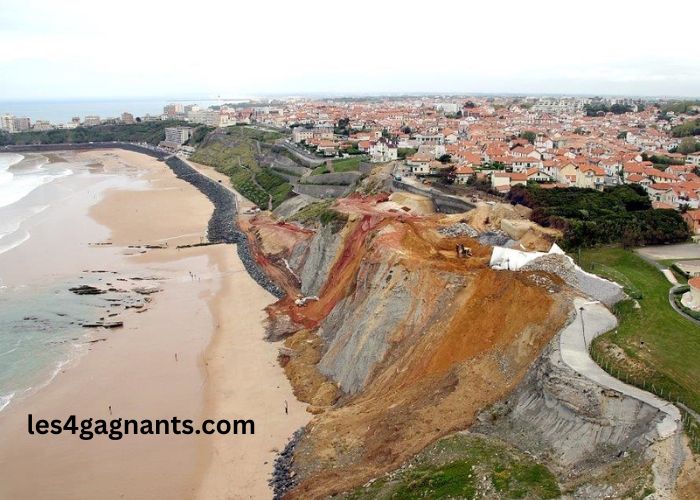The Evolution Des Cotes is a process shaped by natural forces, climate changes, and human activity that continually alter coastlines over time. Understanding the Evolution Des Cotes is essential for coastal management, environmental protection, and long-term planning in vulnerable coastal regions.
As time passes, the Evolution Des Cotes becomes a visible indicator of changing environmental conditions, reflecting erosion, deposition, and sea level rise. The science behind the Evolution Des Cotes reveals the complex relationship between natural geography and human influence, offering insight into the resilience and fragility of coastal zones.
What Is The Main Cause Behind The Evolution Des Cotes?
The Evolution Des Cotes is primarily driven by the interaction of natural elements such as waves, tides, ocean currents, and weather patterns that shape and reshape coastlines. The energy of waves crashing against the shore, combined with tidal movements and sediment transport, plays a fundamental role in the Evolution Des Cotes, often leading to erosion or accretion.
Human activities such as urbanization, dam construction, and coastal engineering also significantly impact the Evolution Des Cotes by altering sediment supply and disrupting natural processes. The deliberate manipulation of coastlines through seawalls, groynes, and dredging further accelerates or redirects the Evolution Des Cotes, often with unintended consequences.
How Does Climate Change Influence The Evolution Des Cotes?
Climate change has become one of the most significant accelerators in the Evolution Des Cotes, primarily due to rising sea levels and increased storm frequency. Warmer global temperatures cause glaciers and polar ice caps to melt, resulting in sea level rise that directly influences the Evolution Des Cotes by flooding low-lying areas and intensifying coastal erosion.
Additionally, the warming of ocean waters amplifies storm intensity, leading to more frequent and severe weather events that drastically impact the Evolution Des Cotes. These extreme events not only reshape the physical landscape but also compromise the structural integrity of coastal communities, increasing the need to study and manage the Evolution Des Cotes with urgency.
Why Is The Evolution Des Cotes Important To Coastal Communities?
The Evolution Des Cotes directly affects the livelihoods, infrastructure, and safety of millions living in coastal areas, making it a critical concern for communities worldwide. As coastlines retreat or expand, the availability of habitable land shifts, often displacing populations and disrupting economic activities tied to the coast such as tourism and fisheries, all due to the Evolution Des Cotes.
Understanding the Evolution Des Cotes allows communities to implement informed policies and adaptive strategies that safeguard people, property, and ecosystems. From establishing buffer zones to reinforcing natural barriers, sustainable planning that incorporates the realities of the Evolution Des Cotes is essential for long-term resilience and prosperity.
What Are The Natural Processes Involved In The Evolution Des Cotes?
The Evolution Des Cotes is driven by a variety of natural processes including erosion, sediment deposition, and sea-level fluctuations. Wind and water movement gradually wear down rock and soil, redistributing materials along the shore, which constantly alters the landscape through the mechanisms of the Evolution Des Cotes.
Other natural events like tsunamis, hurricanes, and tectonic activity contribute to the rapid and sometimes dramatic changes in coastal geography. These unpredictable yet powerful forces exemplify the dynamic and ever-changing nature of the Evolution Des Cotes, revealing just how intricate and volatile the coastal environment can be over time.
How Do Human Interventions Affect The Evolution Des Cotes?
While nature plays a significant role, human interference has become a dominant factor in the Evolution Des Cotes over the last century. Building cities, ports, and sea defenses along coastlines often disrupt the delicate balance of sediment transport, which accelerates the Evolution Des Cotes in ways that can be both beneficial and harmful.
In some cases, interventions like beach nourishment or planting vegetation can help stabilize the Evolution Des Cotes, but more often, construction and industrial activity increase vulnerability. Without considering long-term environmental impacts, these changes to the Evolution Des Cotes can result in habitat destruction and a loss of biodiversity, making responsible intervention a key challenge.
Can The Evolution Des Cotes Be Predicted Or Controlled?
Predicting the Evolution Des Cotes is possible through the use of satellite imaging, coastal monitoring, and predictive modeling, which help identify patterns and potential risks. Advanced technology combined with historical data enables scientists to forecast the Evolution Des Cotes, providing valuable insight for urban planners and environmentalists.
However, controlling the Evolution Des Cotes is far more complex due to the unpredictability of natural forces and the unintended outcomes of human intervention. While we may guide or influence the Evolution Des Cotes through adaptive infrastructure and sustainable development, complete control remains beyond reach, emphasizing the need for respect and understanding of coastal dynamics.
Conclusion
The Evolution Des Cotes is not just a geographical or geological phenomenon—it is a powerful narrative of time, change, and the ongoing interaction between natural forces and human civilization. Coastlines are among the most dynamic environments on Earth, constantly reshaped by the rhythm of waves, the pull of tides, and the unpredictable behavior of storms.
This ongoing transformation, defined as the Evolution Des Cotes, impacts not only the physical landscape but also the ecological, economic, and social systems built around it. Whether it’s through the quiet erosion of a sandy beach, the dramatic aftermath of a hurricane, or the deliberate construction of coastal defenses, the Evolution Des Cotes reflects both the vulnerability and the adaptability of human societies.
As climate change accelerates, sea levels rise, and coastal populations continue to grow, understanding and anticipating the Evolution Des Cotes becomes more crucial than ever. It is no longer sufficient to observe these changes passively; proactive strategies are needed that blend scientific research, sustainable development, and community engagement.
Technologies like satellite imaging, data modeling, and ecological engineering offer promising tools to better predict and respond to the Evolution Des Cotes, but they must be accompanied by thoughtful policy and global cooperation.
Ultimately, the Evolution Des Cotes teaches us that coastlines are not fixed boundaries, but living, breathing systems that respond to every action and inaction. Embracing this truth allows us to live more harmoniously with our planet, safeguarding both the natural world and the human lives that depend on it. In acknowledging the profound role of the Evolution Des Cotes, we not only prepare for the future—we also honor the past and the forces that have sculpted our world over millennia.



